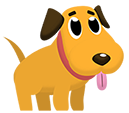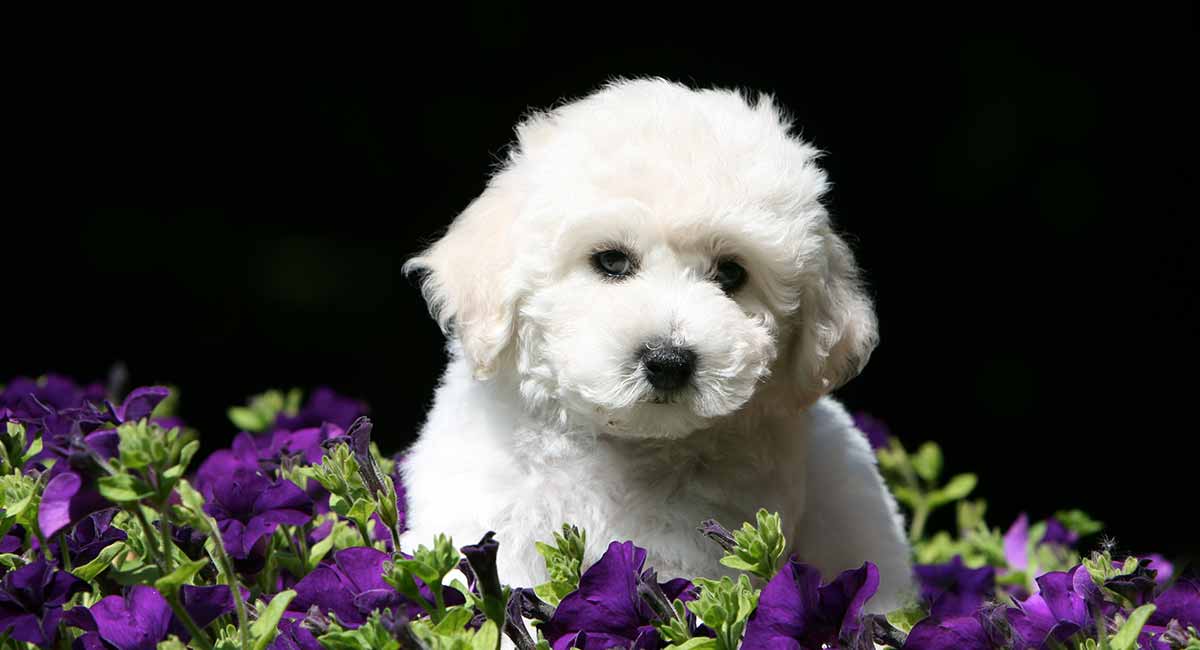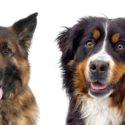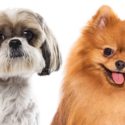The Bichon Poodle mix is created by combining the Bichon Frise and the Toy or Miniature Poodle. These are a popular type of ‘teddy bear dog’. also known as the Poochon or Bishpoo. Raising and training a Bichon Poodle is a lot of fun. These are smart little dogs that are quick to learn and …
Bull Lurcher Dogs – Fast And Fearless?
If you haven’t heard the term bull lurcher before, this article has everything you need to know about this very particular category of cross breed dogs. From what it means to be a bull lurcher dog, to what it’s like owning one. What is a bull lurcher? Bull lurcher appearance Do bull lurchers shed? Bull …
1 Year Old Goldendoodle
Our complete guide to 1 year old Goldendoodle behavior and development will help you approach their first birthday with confidence. We’ve got answers to all our readers’ frequently asked questions, including ‘when do Goldendoodles stop growing?’, ‘how long does the puppy stage last?’ and ‘what’s the best way to train a 1 year old Goldendoodle?’ …
Miniature Hippo Dog
This detailed introduction to the Miniature Hippo Dog includes everything you need to know about finding, raising, and living with one of dogdom’s most unusual hybrids. The Miniature Hippo dog is a cross between a Shar-Pei and a Cocker Spaniel. Some Mini Hippo Dogs do indeed look like small hippopotamuses, but there is a lot …
Beagle Husky Mix
A Beagle Husky mix dog, also known as a Beaski, is likely to inherit a mix of physical features which makes them hard to place. Their temperament is almost sure to be happy and affectionate, but they may have a mischievous streak, and a tendency to roam into the distance if walked off leash. Whilst …
Bulldog Shih Tzu Mix – What Kind of Dog Should You Expect?
The Bulldog Shih Tzu mix combines the chunky Bulldog and the long-haired Shih Tzu. They look very different at first glance, and there can be a lot of variation among Bulldog Shih Tzu mix puppies. The qualities a mixed breed dog inherits from each parent might only become apparent when they are grown up. Where …
Bulldog Shih Tzu Mix – What Kind of Dog Should You Expect?Read More
Husky Pug Mix – Where Athletic Meets Laid Back
A Husky Pug mix is a dog with a Siberian Husky mother and a Pug father. Husky Pug mix dogs are also known as Hugs! But due to their incredibly contrasting parentage, the actual nature of a Hug is very difficult to predict. Siberian Huskies and Pugs are popular breeds for many reasons. They’re both …
Walrus Dog – Is the Shar Pei Basset Hound Mix Right for You?
A Walrus dog is a crossbreed of a Shar Pei and a Basset Hound. Walrus dogs can have very variable looks and personalities because their parents are so different from one another. However, generally they are medium sized dogs weighing between 40 and 65 pounds. They are usually loyal, friendly, and intelligent. But they can …
Walrus Dog – Is the Shar Pei Basset Hound Mix Right for You?Read More
Bernese Mountain Dog German Shepherd Mix: A Complete Guide
A Bernese Mountain Dog German Shepherd mix combines the giant Bernese Mountain Dog breed from Switzerland and a German Shepherd Dog. The Berner and German Shepherd breeds were founded for very different historical reasons, and they have different looks and temperaments too. Their mixed breed puppies can be very variable and surprising! The Bernese Mountain …
Bernese Mountain Dog German Shepherd Mix: A Complete GuideRead More
Pomeranian vs Shih Tzu – Which Pocket Pup Makes The Best Pet?
The main differences between a Pomeranian vs Shih Tzu are: Size – Even the little Shih Tzu looks big compared to the tiny Pomeranian! Coat – The Pomeranian’s coat is fluffy, and the Shih Tzu’s coat is flowing, but both need a lot of grooming. Personality – The headstrong Pom is less easily motivated during …
Pomeranian vs Shih Tzu – Which Pocket Pup Makes The Best Pet?Read More










